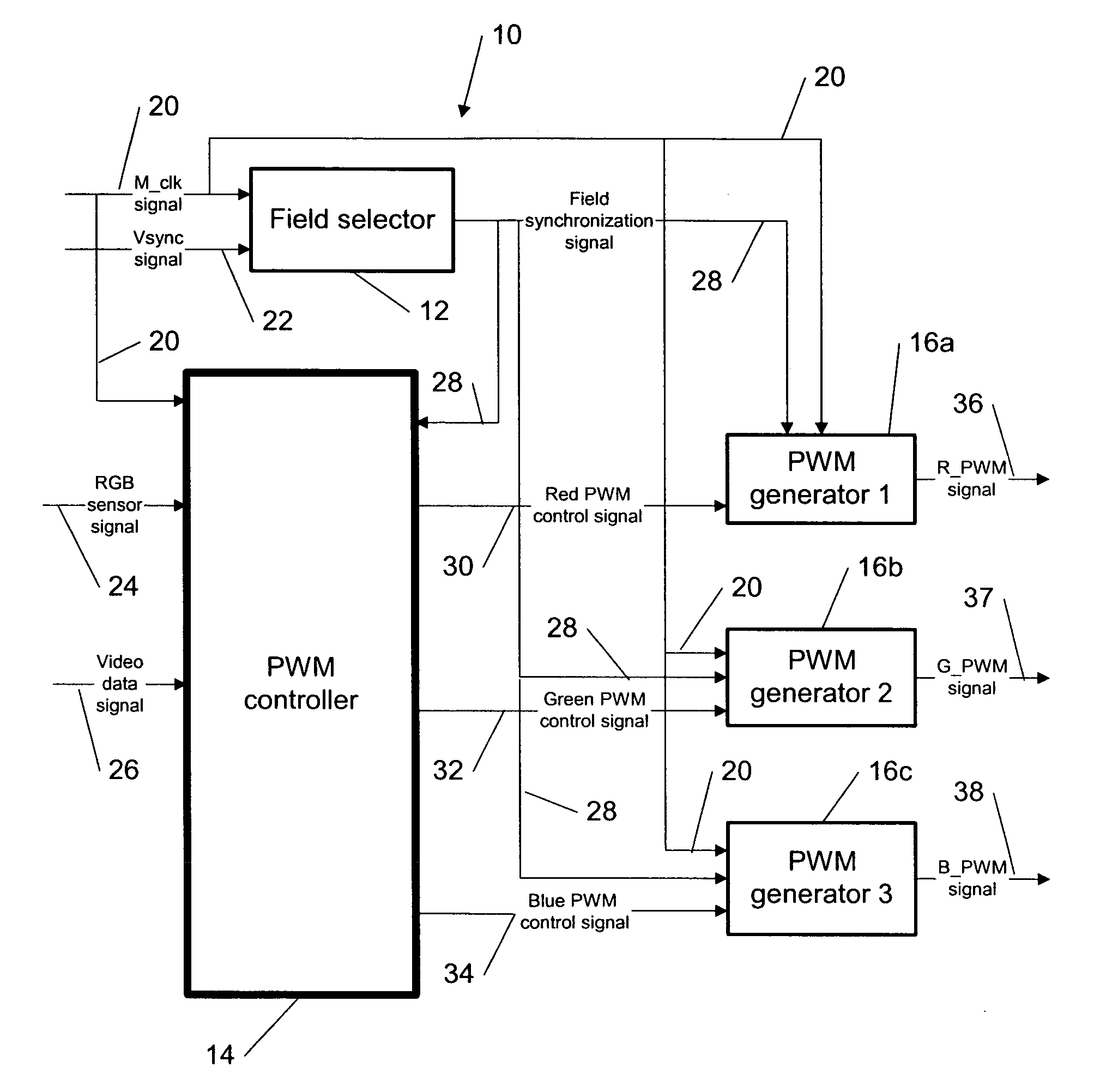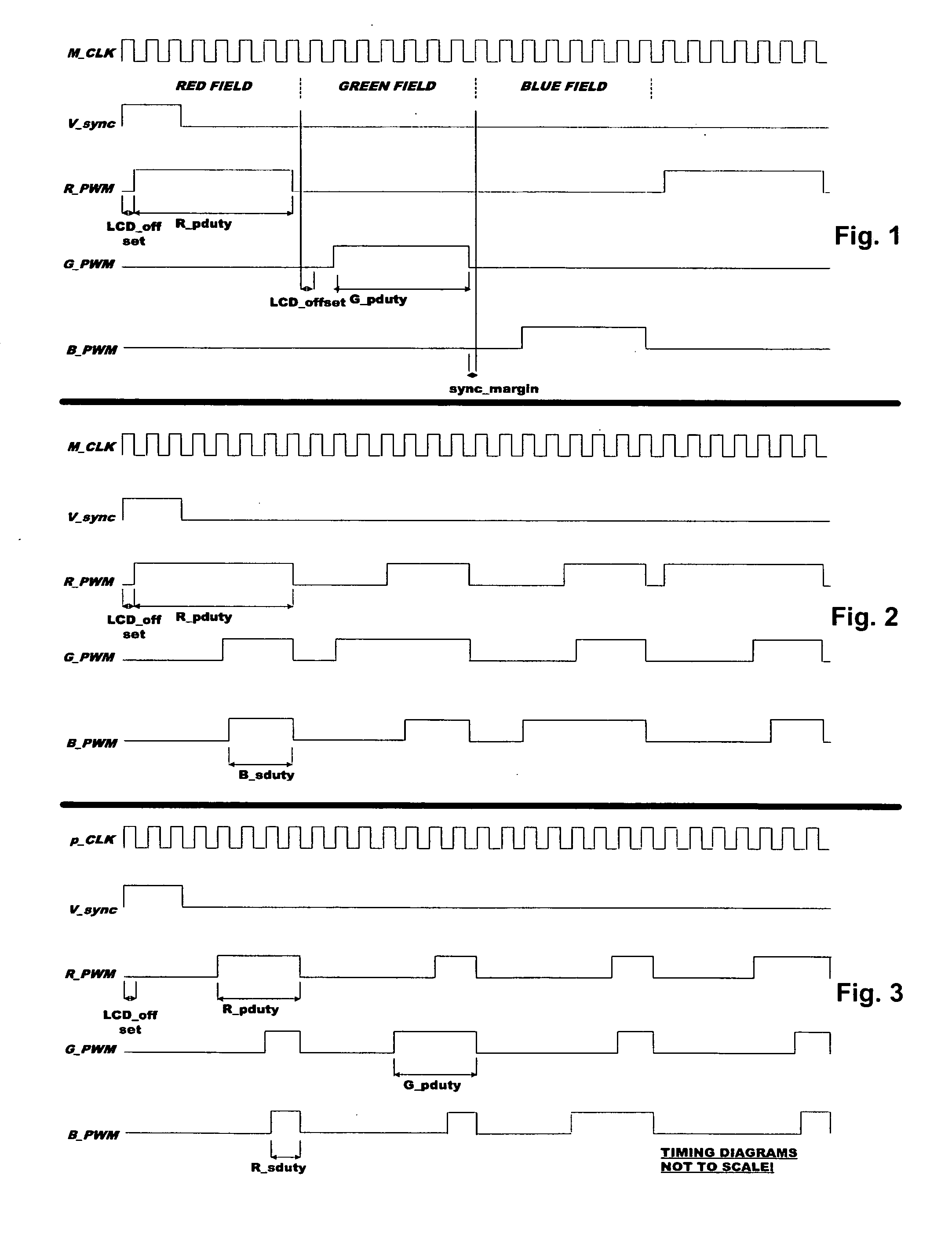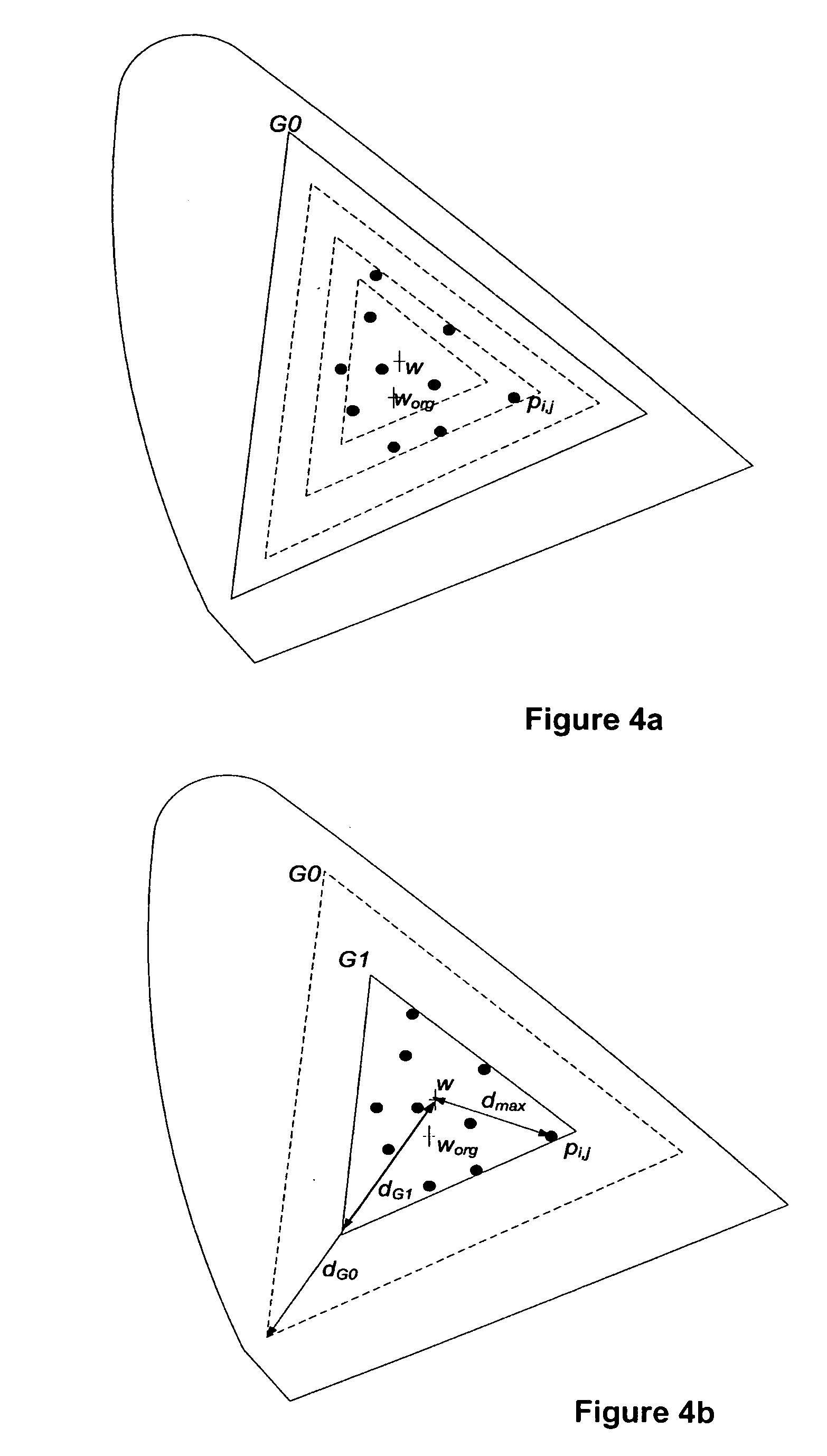Display device with dynamic color gamut
a display device and dynamic technology, applied in the field of dynamic adjustment of the color gamut of the display device, can solve the problems of low contrast at high illuminance, difficult and expensive implementation at high resolution, blur-free video only being achieved, etc., and achieve the effect of much higher color saturation
- Summary
- Abstract
- Description
- Claims
- Application Information
AI Technical Summary
Benefits of technology
Problems solved by technology
Method used
Image
Examples
Embodiment Construction
[0046] A new method, apparatus and software product is presented for dynamically adjusting a color gamut of a display and further adjusting a luminance of the display in an electronic device by adjusting and turning on field duties of primary colors. The display can be any field sequential color display with any number of primaries and any number of color fields, the latter larger or equal to the former. Also, according to embodiments of the present invention, the display can be, but is not limited to, a liquid crystal display (LCD), a micro-electro-mechanical systems (MEMS) display, etc. Also, the displays utilizing different modes can be used, including (but not be limited to) a direct-view display, a near-eye display, a projector display, etc.
[0047] The electronic device can be, but is not limited to, a non-portable electronic device, a television, a computer, a monitor, a wireless communication device, a mobile phone, a camera-phone mobile device, a portable electronic device, ...
PUM
 Login to View More
Login to View More Abstract
Description
Claims
Application Information
 Login to View More
Login to View More - R&D
- Intellectual Property
- Life Sciences
- Materials
- Tech Scout
- Unparalleled Data Quality
- Higher Quality Content
- 60% Fewer Hallucinations
Browse by: Latest US Patents, China's latest patents, Technical Efficacy Thesaurus, Application Domain, Technology Topic, Popular Technical Reports.
© 2025 PatSnap. All rights reserved.Legal|Privacy policy|Modern Slavery Act Transparency Statement|Sitemap|About US| Contact US: help@patsnap.com



